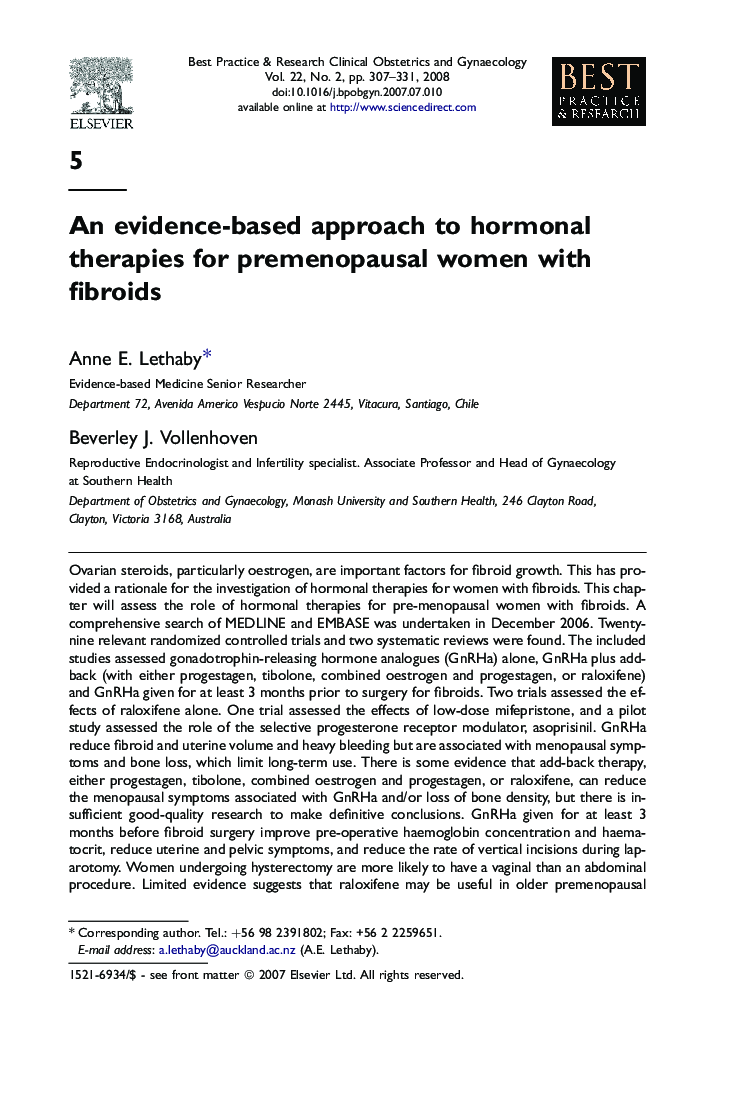| Article ID | Journal | Published Year | Pages | File Type |
|---|---|---|---|---|
| 3907569 | Best Practice & Research Clinical Obstetrics & Gynaecology | 2008 | 25 Pages |
Ovarian steroids, particularly oestrogen, are important factors for fibroid growth. This has provided a rationale for the investigation of hormonal therapies for women with fibroids. This chapter will assess the role of hormonal therapies for pre-menopausal women with fibroids. A comprehensive search of MEDLINE and EMBASE was undertaken in December 2006. Twenty-nine relevant randomized controlled trials and two systematic reviews were found. The included studies assessed gonadotrophin-releasing hormone analogues (GnRHa) alone, GnRHa plus add-back (with either progestagen, tibolone, combined oestrogen and progestagen, or raloxifene) and GnRHa given for at least 3 months prior to surgery for fibroids. Two trials assessed the effects of raloxifene alone. One trial assessed the effects of low-dose mifepristone, and a pilot study assessed the role of the selective progesterone receptor modulator, asoprisinil. GnRHa reduce fibroid and uterine volume and heavy bleeding but are associated with menopausal symptoms and bone loss, which limit long-term use. There is some evidence that add-back therapy, either progestagen, tibolone, combined oestrogen and progestagen, or raloxifene, can reduce the menopausal symptoms associated with GnRHa and/or loss of bone density, but there is insufficient good-quality research to make definitive conclusions. GnRHa given for at least 3 months before fibroid surgery improve pre-operative haemoglobin concentration and haematocrit, reduce uterine and pelvic symptoms, and reduce the rate of vertical incisions during laparotomy. Women undergoing hysterectomy are more likely to have a vaginal than an abdominal procedure. Limited evidence suggests that raloxifene may be useful in older premenopausal women with lower concentrations of background oestradiol. Limited short-term evidence of two progestogenic therapies indicates that low-dose mifepristone may improve quality of life and bleeding in the short term, and asoprisinil may improve bleeding and fibroid-related symptoms. In conclusion, more research is required on the role of hormonal therapies for women with fibroids, particularly add-back options and selective oestrogen and progesterone receptor modulators. No definitive conclusions can be reached on the basis of the limited evidence found.
